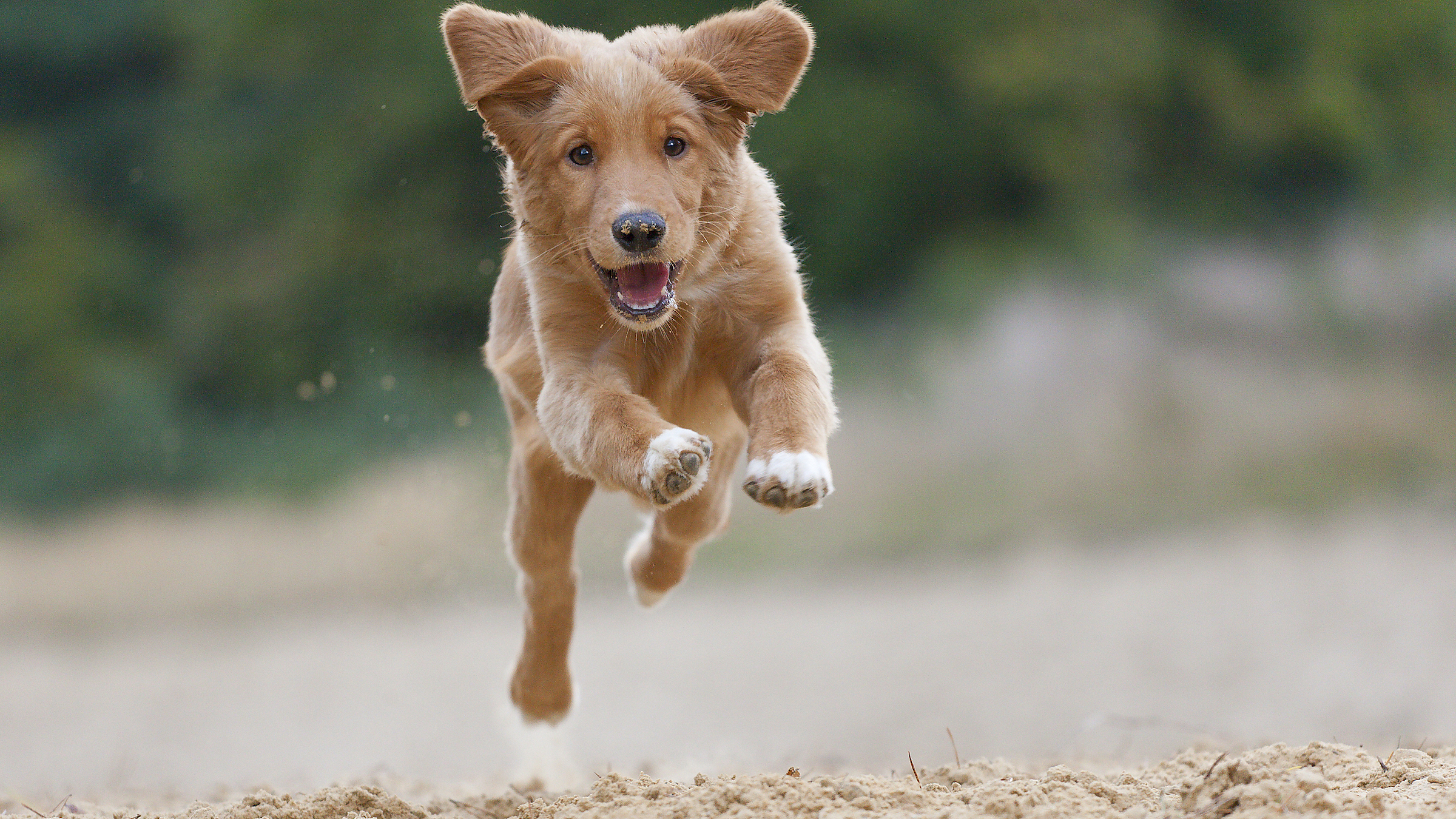Why do dogs and cats get the zoomies?
Pets often run around in random bursts of speed, an activity called frenetic random activity periods, or FRAPs. But why do they do it?

One moment a pup is peacefully eating kibble, and the next it's running around the house like there's a fire burning under its tail. These episodes of "zoomies" last for up to several minutes, but they can feel much longer when a dog bulldozes through a crowded home.
So, why do dogs, cats and other pets dash around for no apparent reason?
"They're just having fun," said José Arce, president-elect of the American Veterinary Medical Association. These bursts of energy, technically called frenetic random activity periods (FRAPs), are natural and seen in many domesticated and wild animal species.
Related: Why do dogs have cold noses?
FRAPs may appear random, but a few triggers are common for dogs. When an owner lets a dog out of its crate, the pup may zoom around to let out energy it built up throughout the day. Similarly, an owner coming home after work can trigger a dog to run around in a brief stint of exercise after an hours-long nap. Another frequent time for FRAPs is after a bath, possibly to release nervous energy or excitement from getting bathed, Arce told Live Science. Dogs' full-body shakes are highly effective, so the post-bath time zoomies likely aren't for drying off.
Cats have different triggers. Whereas pups get zoomies throughout the day, felines are more likely to get them at dusk and dawn because that's when they're most active. They also tend to experience FRAPs after grooming and using the litter box. Arce usually feeds his own cats dry food, but when he breaks out the occasional can of wet food, they race around his home. "They get really happy and excited, and they run up and down the hall and jump on the couch," he said.
When cats get the zoomies, they tend to sprint for less time than dogs. More athletic and high-strung dog breeds, like Australian shepherds, may do them more often than laid-back dogs, probably because they need to let their energy out more frequently, Arce said.
Get the world’s most fascinating discoveries delivered straight to your inbox.
Wild animals as far-ranging as ferrets and elephants also perform FRAPs. The behavior is sometimes called "binkies" in rabbits and is thought to be an expression of excitement, according to a 2020 study in the Journal of the American Association for Laboratory Animal Science. Bunny binkies can appear as running, twisting the head or body around, and hopping or jumping in the air.
Although FRAPs are a normal behavior, some pet owners misinterpret the frantic energy and worry that their dog is stressed or ill, Arce said. They may misread zoomies as obsessive compulsive behaviors. Dogs with obsessive compulsive disorder (OCD) may chase their tails, follow shadows, snap at the air like they're trying to catch a fly and mop the floor with their tongues — but zooming around the house is not a sign of OCD in dogs. If you're unsure whether your pet is engaging in zoomies or having OCD symptoms, Arce recommended recording a video of the behavior and showing it to your veterinarian.
Zoomies themselves aren't particularly dangerous. Arce has never heard of a pet getting a serious injury from zoomies. If you're indoors and worried, remove any fragile objects from the dog's path. If it happens on a walk, keep firm control of the leash so your dog doesn't dash away. If you bring your dog somewhere that could be dangerous for a FRAP, such as sightseeing at a cliff, consider letting the pet get out any excess energy beforehand.

Tyler Santora is a freelance science and health journalist based out of Colorado. They write for publications such as Scientific American, Nature Medicine, Medscape, Undark, Popular Science, Audubon magazine, and many more. Previously, Tyler was the health and science Editor for Fatherly. They graduated from Oberlin College with a bachelor's degree in biology and New York University with a master's in science journalism.



